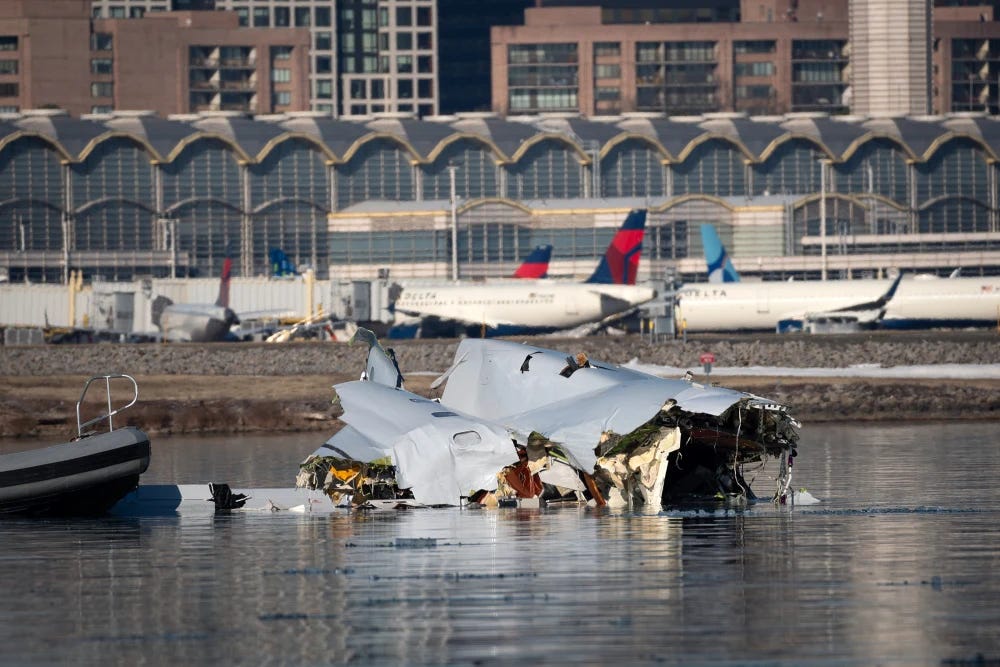Investigators Focus on Altitude, Communication, and Staffing After Deadly Helicopter-Plane Collision
Defense Secretary Pete Hegseth confirms the helicopter was on an annual training flight.
WASHINGTON — The cause of Wednesday night’s deadly collision between an Army Black Hawk helicopter and an American Airlines jetliner over the Potomac River remains under investigation. However, several key factors are emerging as potential areas of concern, including the helicopter’s altitude at the time of the crash.
Investigators are still working to gather evidence from the crash site in the Potomac River, examining flight data and cockpit voice recorder information. The collision, which occurred near Washington D.C.'s Reagan National Airport, resulted in the deaths of all 64 people aboard American Airlines Flight 5342 and the three individuals aboard the helicopter. It marked the deadliest U.S. air disaster since 2001.
The incident took place just before 9 p.m. ET, when the PSA Airlines Bombardier CRJ-700 was flying at approximately 300 feet in its final approach to Reagan National's Runway 33. The helicopter, which was on an annual proficiency training flight, collided with the plane during its approach.
Defense Secretary Pete Hegseth confirmed that the helicopter was conducting routine training, while Federal Aviation Administration (FAA) regulations require helicopters operating near Washington, D.C., to maintain an altitude of no more than 200 feet in the area surrounding the airport.
“D.C. is a unique environment,” said National Transportation Safety Board (NTSB) member Todd Inman during a Thursday afternoon briefing. He explained that the city has specific helicopter flight zones. “This one was transitioning from track one to four as part of their normal procedure,” he noted. "If you live in D.C., you see a lot of helicopters moving through the area. There’s a very well-defined system.”
In response to the collision, the FAA has implemented new flight restrictions for helicopters in the D.C. area and around Reagan National Airport. These restrictions allow some exceptions for medical evacuation and law enforcement operations. The airspace between certain bridges, known as Zone 1, is currently inactive, while in Zone 4, helicopters are only permitted to fly south of the Woodrow Wilson Bridge.
The NTSB is leading the investigation into the collision and has been recovering key evidence, including flight data and cockpit voice recorders from the passenger jet. These materials are being analyzed in NTSB laboratories. However, the agency emphasized that it is too early to draw any conclusions.
“We have substantial amounts of information, but we need to verify and carefully analyze it to ensure its accuracy,” NTSB Chair Jennifer Homendy said.
On Friday, former President Donald Trump took to social media, stating that the helicopter “was flying too high, by a lot,” and that it was “far above the 200-foot limit.” Hegseth echoed similar remarks at a White House briefing on Thursday, suggesting that an “elevation issue” had occurred. Both statements raised questions given that the NTSB typically leads investigations into airline accidents in the U.S.
As investigators continue their work, the cause of the crash remains unclear, and authorities stress the importance of allowing the NTSB to complete its thorough investigation before making definitive conclusions.


